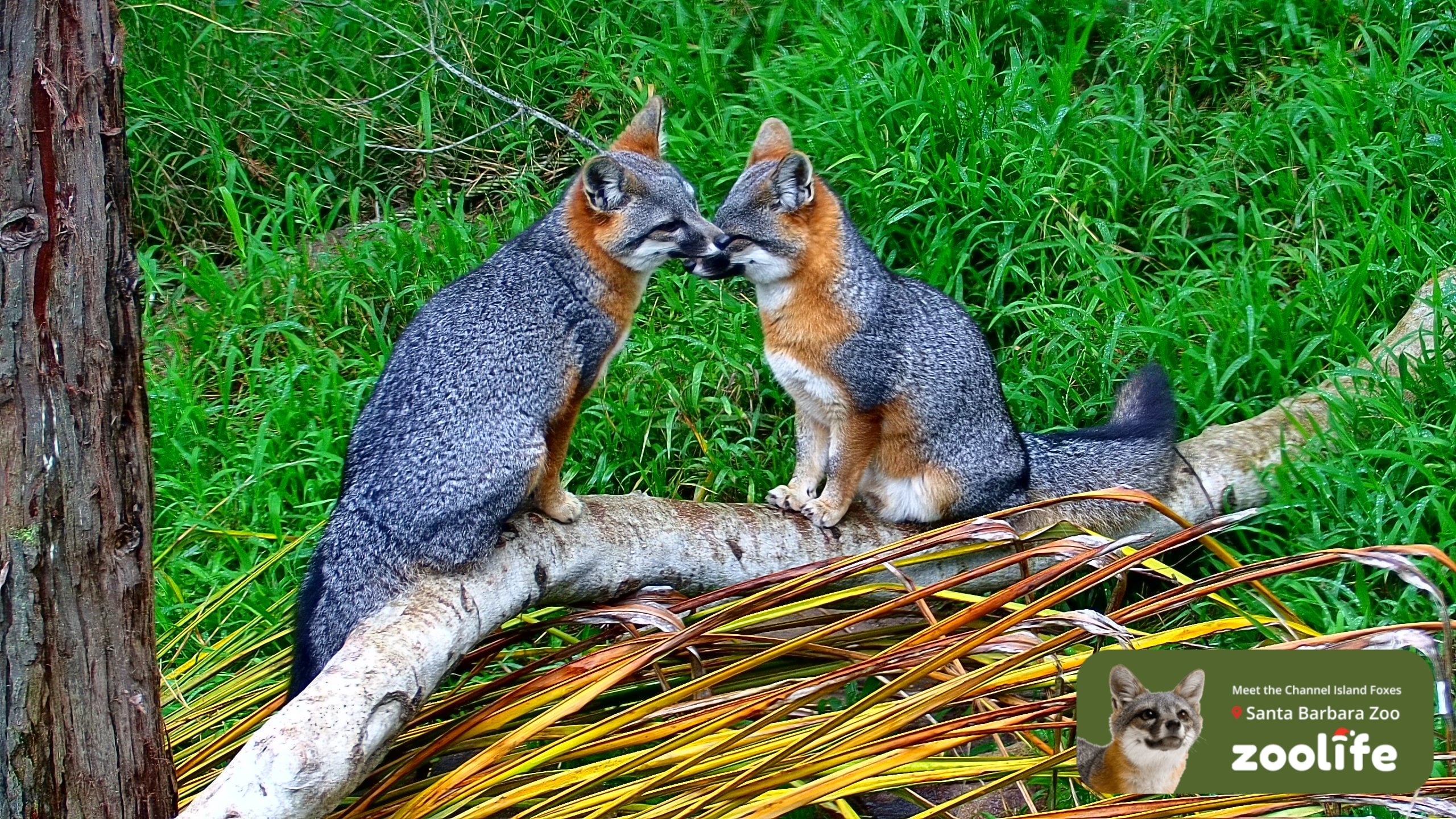The Channel Island Foxes, found exclusively on the six Channel Islands off the coast of California, are a unique and fascinating species that have adapted to their island environment in remarkable ways. These small foxes, weighing between 4 and 6 pounds, are a subspecies of the Gray Fox, but their distinct evolutionary path has led to several notable differences from their mainland counterparts.
One of the most intriguing aspects of the Channel Island Foxes is their evolutionary history. It is believed that these foxes descended from Gray Foxes that migrated to the islands thousands of years ago, possibly during the last ice age when the sea levels were lower. Over time, they underwent a process known as island dwarfism, where their body size decreased as an adaptation to the limited resources available on the islands. This reduction in size has allowed them to thrive in their environment, where food and space are limited.
The diet of the Channel Island Foxes is also of particular interest. These omnivorous mammals feed on a variety of food sources including fruits, insects, birds, and small mammals. Their ability to adapt their diet to the available resources on the islands has been crucial to their survival. For example, they predate on the Island Spotted Skunk, another endemic species, as well as on birds and their eggs, playing a vital role in the island’s ecosystem as both predators and prey.
However, the Channel Island Foxes have faced numerous threats to their survival. Introduced species such as feral cats, dogs, and pigs have posed significant predatory threats. Human activities, including the development of the islands for human habitation and tourism, have led to habitat loss and fragmentation. Perhaps most notably, the decline of the Bald Eagle, a natural predator of the fox, due to DDT poisoning, led to an unexpected increase in the fox population, which subsequently crashed due to overexploitation of their food resources. This complex interplay of factors highlights the delicate balance of the island ecosystem and the challenges faced by conservation efforts.
Conservation initiatives have been put in place to protect the Channel Island Foxes. The removal of invasive species, such as feral pigs and cats, has been a significant focus. Additionally, foxes have been vaccinated against diseases introduced by domestic animals, and captive breeding programs have been established to increase population numbers. The recovery of the Bald Eagle population, thanks to the banning of DDT, has also played a crucial role in balancing the ecosystem. These efforts have shown positive results, with the fox population beginning to recover on several of the islands.
To further understand the dynamics at play, let’s delve into a comparative analysis of the conservation strategies employed for the Channel Island Foxes versus those used for other island species. For instance, the conservation of the California Condor, another endangered species found in the region, offers insights into the effectiveness of captive breeding programs combined with habitat protection. Similarly, the eradication of invasive species on islands like Santa Cruz has demonstrated the importance of restoring native ecosystems to preserve biodiversity.
In addition to these conservation efforts, it’s essential to explore the historical evolution of the Channel Island Foxes’ relationship with their human counterparts. Historical records show that early human settlement on the islands led to significant changes in the foxes’ behavior and population dynamics. For example, the introduction of domestic livestock provided an alternative food source for the foxes, temporarily alleviating pressure on native species. However, this also led to increased conflict between humans and foxes, highlighting the need for coexistence strategies in conservation planning.
For those interested in practical applications of conservation biology, the story of the Channel Island Foxes offers valuable lessons. Implementing effective conservation measures requires a deep understanding of the ecosystem, including the roles of predators and prey, and the impacts of human activity. The step-by-step approach to conservation, involving the assessment of threats, the implementation of protective measures, and the monitoring of outcomes, is exemplified in the efforts to save the Channel Island Foxes.
Furthermore, examining the myth vs. reality of island conservation can provide insights into the complexities of managing delicate ecosystems. While it might be assumed that removing all non-native species would be beneficial, the reality is that such actions must be carefully considered to avoid unintended consequences. The decision framework for conservationists, therefore, involves weighing the benefits of intervention against potential risks, always with the goal of preserving the integrity of the ecosystem.
In conclusion, the Channel Island Foxes represent a remarkable example of evolutionary adaptation and the challenges of conservation in unique ecosystems. Their story underscores the importance of holistic conservation approaches that consider the intricate balance of island ecosystems and the impacts of human activity. By supporting conservation efforts and educating ourselves about these incredible animals, we can work towards ensuring the long-term survival of the Channel Island Foxes and the preservation of their extraordinary habitat.
What are the main threats to the Channel Island Fox population?
+The main threats include predation by non-native species such as feral cats and dogs, habitat loss due to human development, and disease. Climate change also poses a significant threat by altering the availability of food resources and increasing the risk of extreme weather events.
How can individuals contribute to the conservation of the Channel Island Foxes?
+Individuals can contribute by supporting organizations involved in fox conservation, spreading awareness about the importance of preserving the island ecosystem, and making environmentally conscious choices to reduce their impact on biodiversity. Donations to reputable conservation groups and participation in citizen science projects can also be incredibly valuable.
What role do Channel Island Foxes play in their ecosystem?
+Channel Island Foxes are both predators and prey, playing a crucial role in maintaining the balance of their ecosystem. They prey on rodents, birds, and other small animals, helping to control populations that might otherwise overgraze vegetation or spread disease. In turn, they are preyed upon by Bald Eagles and other predators, illustrating the complex interdependencies within the island’s food web.



